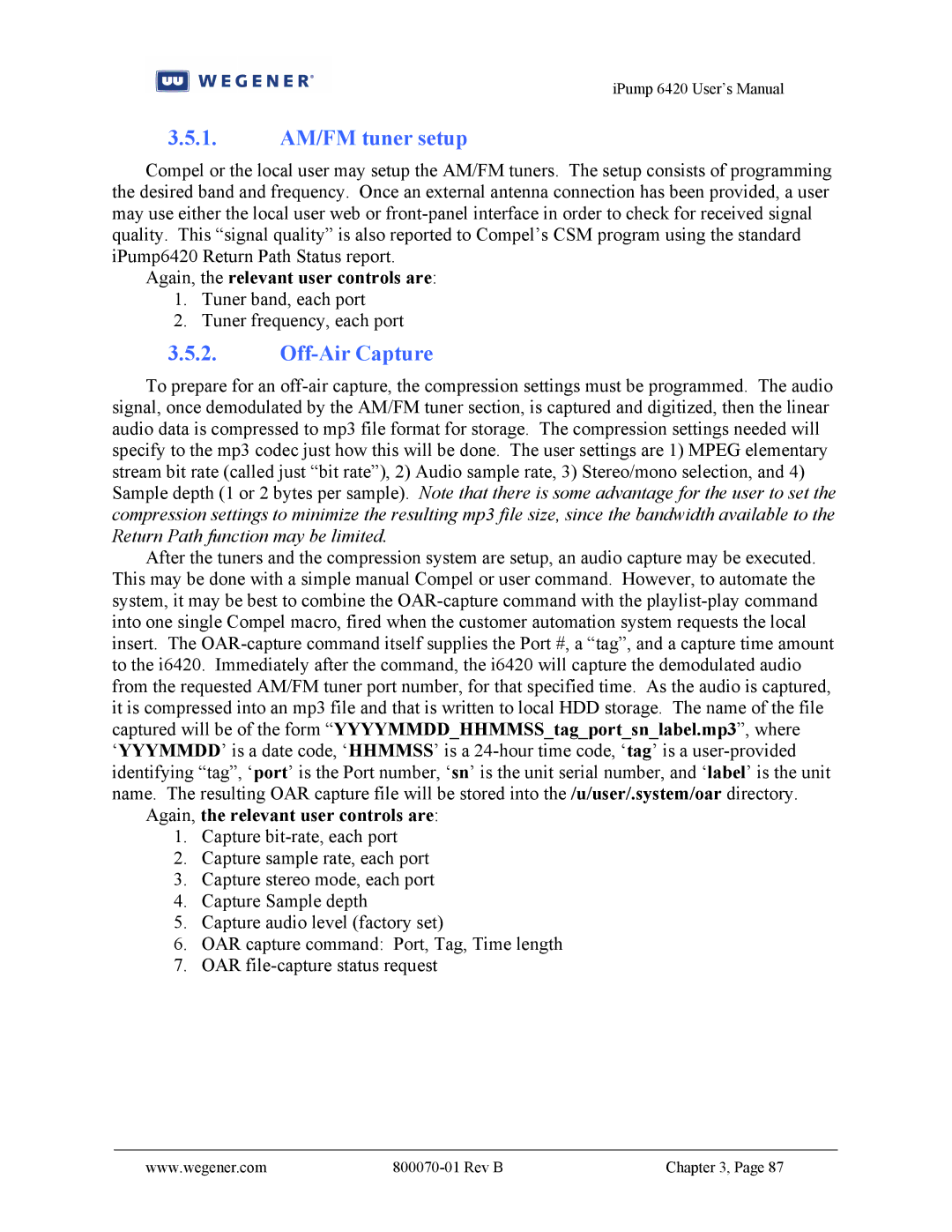iPump 6420 User’s Manual
3.5.1.AM/FM tuner setup
Compel or the local user may setup the AM/FM tuners. The setup consists of programming the desired band and frequency. Once an external antenna connection has been provided, a user may use either the local user web or front-panel interface in order to check for received signal quality. This “signal quality” is also reported to Compel’s CSM program using the standard iPump6420 Return Path Status report.
Again, the relevant user controls are:
1.Tuner band, each port
2.Tuner frequency, each port
3.5.2.Off-Air Capture
To prepare for an off-air capture, the compression settings must be programmed. The audio signal, once demodulated by the AM/FM tuner section, is captured and digitized, then the linear audio data is compressed to mp3 file format for storage. The compression settings needed will specify to the mp3 codec just how this will be done. The user settings are 1) MPEG elementary stream bit rate (called just “bit rate”), 2) Audio sample rate, 3) Stereo/mono selection, and 4) Sample depth (1 or 2 bytes per sample). Note that there is some advantage for the user to set the compression settings to minimize the resulting mp3 file size, since the bandwidth available to the Return Path function may be limited.
After the tuners and the compression system are setup, an audio capture may be executed. This may be done with a simple manual Compel or user command. However, to automate the system, it may be best to combine the OAR-capture command with the playlist-play command into one single Compel macro, fired when the customer automation system requests the local insert. The OAR-capture command itself supplies the Port #, a “tag”, and a capture time amount to the i6420. Immediately after the command, the i6420 will capture the demodulated audio from the requested AM/FM tuner port number, for that specified time. As the audio is captured, it is compressed into an mp3 file and that is written to local HDD storage. The name of the file captured will be of the form “YYYYMMDD_HHMMSS_tag_port_sn_label.mp3”, where ‘YYYMMDD’ is a date code, ‘HHMMSS’ is a 24-hour time code, ‘tag’ is a user-provided identifying “tag”, ‘port’ is the Port number, ‘sn’ is the unit serial number, and ‘label’ is the unit name. The resulting OAR capture file will be stored into the /u/user/.system/oar directory.
Again, the relevant user controls are:
1.Capture bit-rate, each port
2.Capture sample rate, each port
3.Capture stereo mode, each port
4.Capture Sample depth
5.Capture audio level (factory set)
6.OAR capture command: Port, Tag, Time length
7.OAR file-capture status request
www.wegener.com | 800070-01 Rev B | Chapter 3, Page 87 |

